zorger.com
Ads:
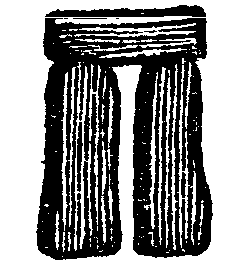 Stonehenge
Stonehenge 
Excerpts and illustrations from:
STONEHENGE
TODAY YESTERDAY
BY
FRANK STEVENS
Curator of the Salsisbury Museum with Plans and Illustrations by
HEYWOOD SUMNER. F.S.A.
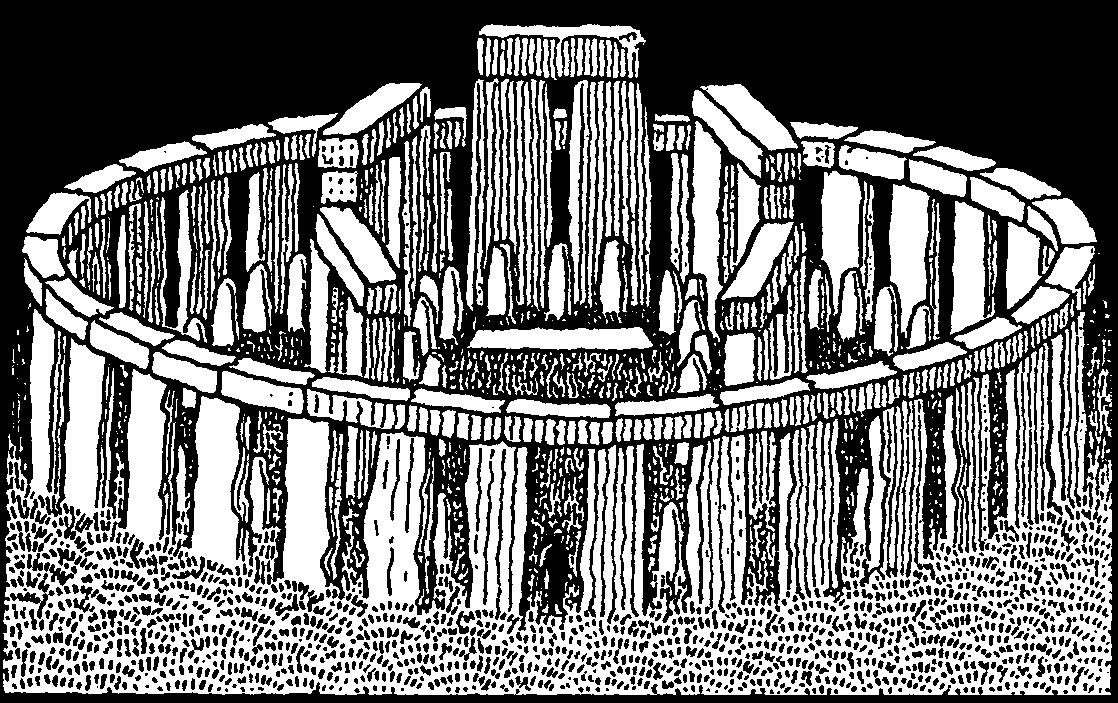
STONEHENGE CONSISTS OF
(a) A circular earthwork, 300 feet in diameter.
(b) An avenue bounded by earthworks approaching it on the north-east.
(c) One large unworked Sarsen Stone, called the "Hele Stone" or "Friar's Heel."
(d) A recumbent slab within the earthwork called the "Slaughtering Stone."
(e) Two small unhewn Sarsens lying north-west and south-east of the Circle of Stones.
(f) A ring of hewn Sarsen stones with "imposts " or lintels mortised to them. The lintels are fitted together with toggle joints. Sixteen out of the original thirty uprights of these "Trilithons" are now standing.
The diameter of this circle is about 108 feet, or that of the dome of St. Paul's.
(g) A ring of less perfectly hewn "Foreign Stones" which have been conveyed to the spot from Pembrokeshire.
These numbered between thirty and forty. Only seven are standing to-day, nine are over-thrown.
(h) Five great Trilithons, arranged in a horse-shoe, with the opening to the north-east. These Trilithons rise gradually in height towards the south-west. The largest group of stones fell A.D. 1620. Those next to the great Trilithon on the north-west, fell on January 3rd, 1797.
To-day only two of the Inner Trilithons are standing. One upright of the great Trilithon (raised and made secure in 1901) is erect.
(i) A horseshoe of less perfectly hewn Foreign Stones. Originally there were fifteen or more of these monoliths averaging eight feet high.
(j) A simple recumbent slab of micaceous sandstone called the "Altar Stone."
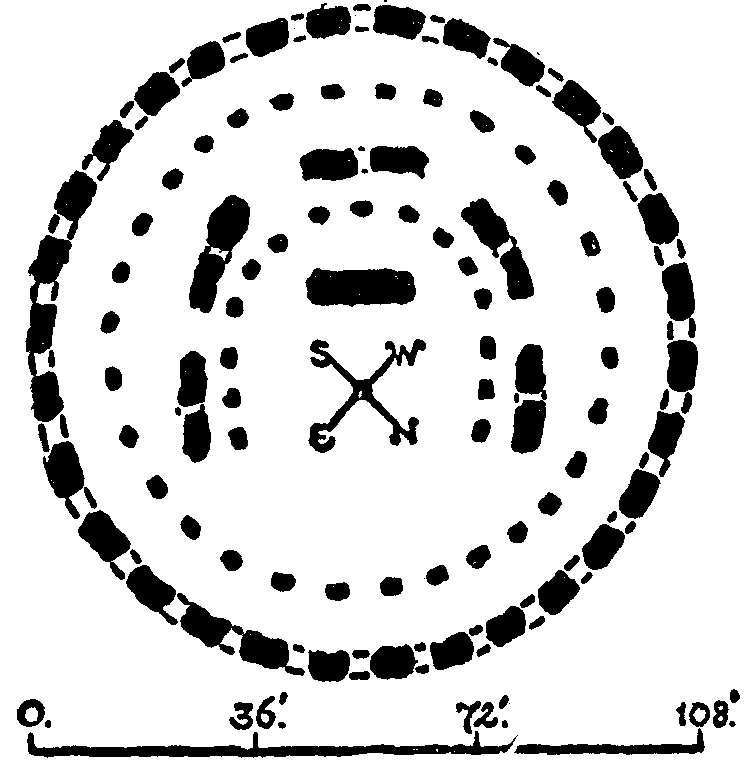
WHERE THE STONES CAME FROM
(a) The Sarsen Stones are the remains of a cap of Tertiary Sandstone which once covered the plain.
(b) The foreign Stones have been brought from Wales. This is unusual; megalithic structures are usually built of materials found close at hand.
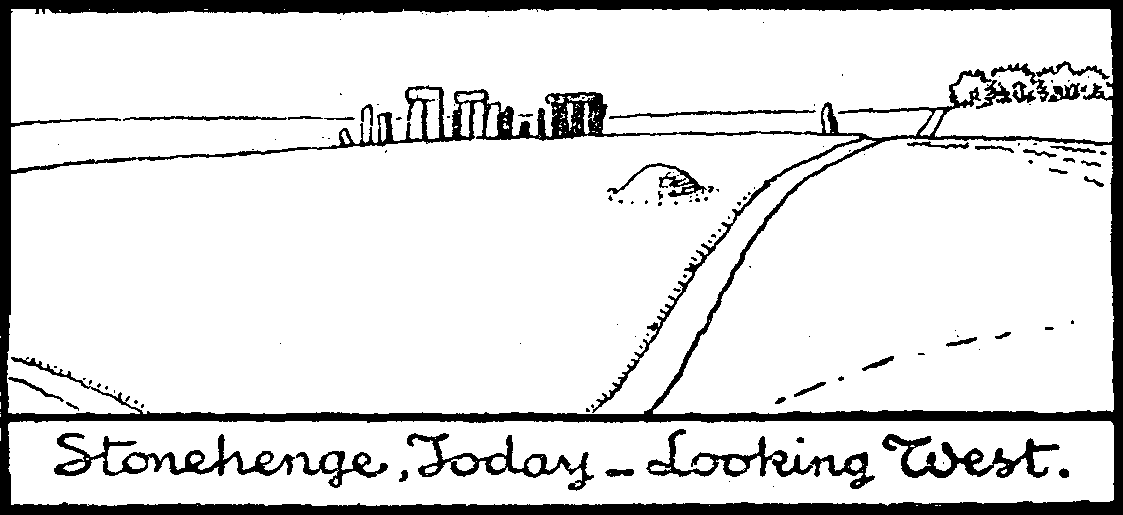
HOW THE MONUMENT WAS ERECTED
The large monoliths of Sarsen Stone were first of all roughly shaped as they lay in situ on the Plain and then transported to the chosen site.
The Foreign Stones were dressed on the spot before erection.
The entire work was performed with stone tools of the roughest description, weighing from half a pound to over sixty pounds.
The only trace of metal discovered in 1901, was a small stain of bronze on one stone, caused by contact with the stone of some very small bronze object, possibly an ornament.
The large Trilithons were erected from the centre of the site.
The Foreign Stones were placed in position afterwards.
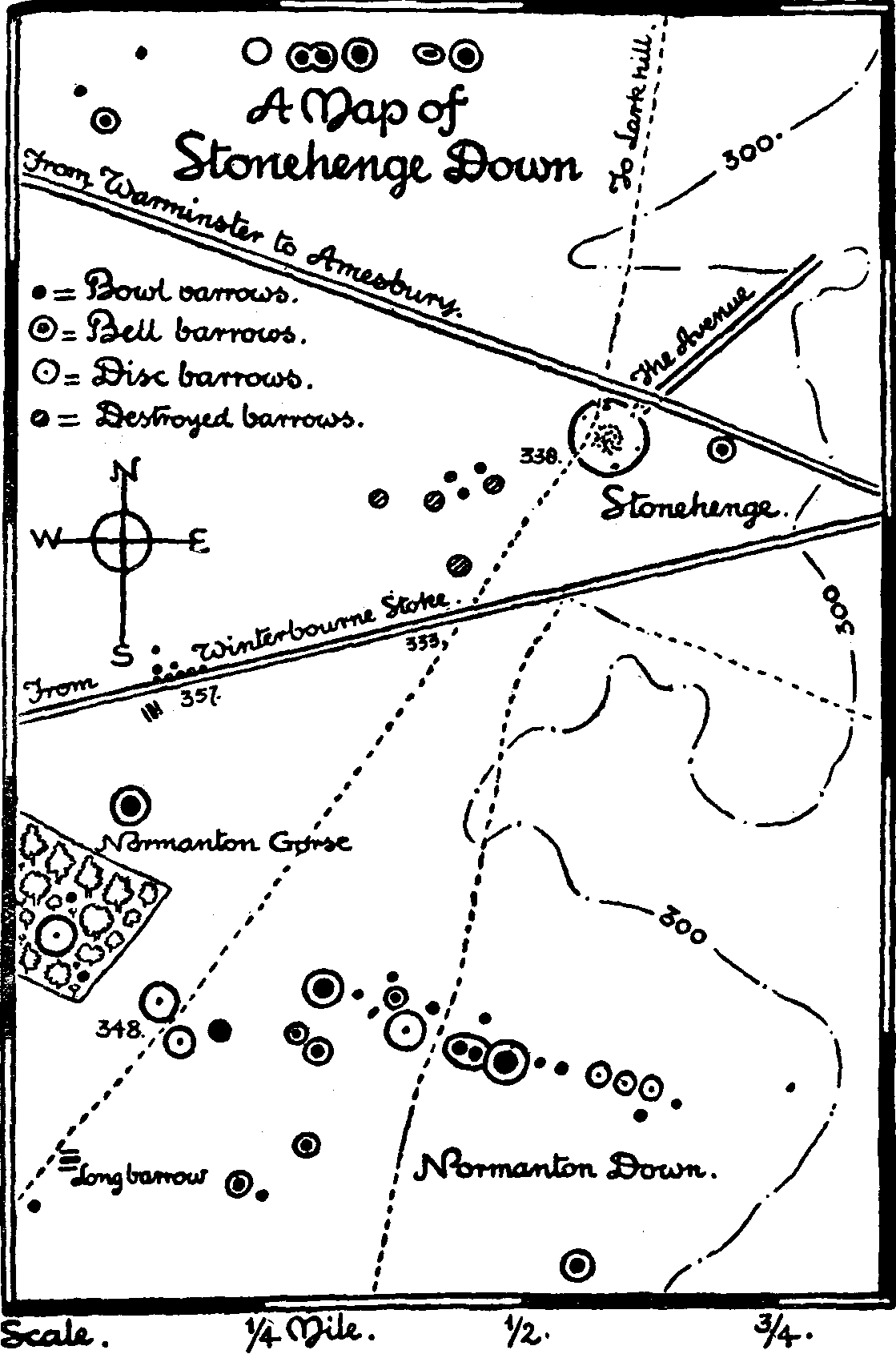
STONEHENGE AND THE SUMMER SOLSTICE
It is a notable fact that the sun rises immediately over the summit of the " Hele Stone," in a line with the axis of Stonehenge on the Summer Solstice.
Sir Norman Lockyer and Mr. Penrose, working on astronomical grounds, fix the date of the circle at 1680 B.C., with a possible error 0f 200 years on either side.
These men would certainly from the nature of their calling, be not so much men of action as men of learning, the recorders of history and tradition, students of the natural phenomena, and of all of those signs and portents which concerned the good of the community. One of the earliest facts which impressed itself upon them must have been the horizon. It was above the horizon that the sun rose in the morning, and below that horizon that it sunk to rest at night ; further, when the sun had set the moon and stars peeped up from that line, and sunk below it, all in due course. These were facts easily apprehended. The common people even had grasped them, but .the wise men learned more. As the link between 'man and the spirits of the stars, sun, and moon, they came to recognise that the sun did not rise over the same spot on the horizon every day. In the summer it rose roughly in the north-east and set in the north-west. In the winter, on the other „hand, it rose in the south-east and set in the south-west. Moreover, these variations would be found to be regular and recurring. The sun would appear to move every day after the Solstice towards the east, and from the east towards the south, back again towards the east, and once more northwards. A staff set in the ground would determine the range of the sun's apparent jourrnny and its extreme limits or turning points. This would fix the Summer Solstice in the north-east
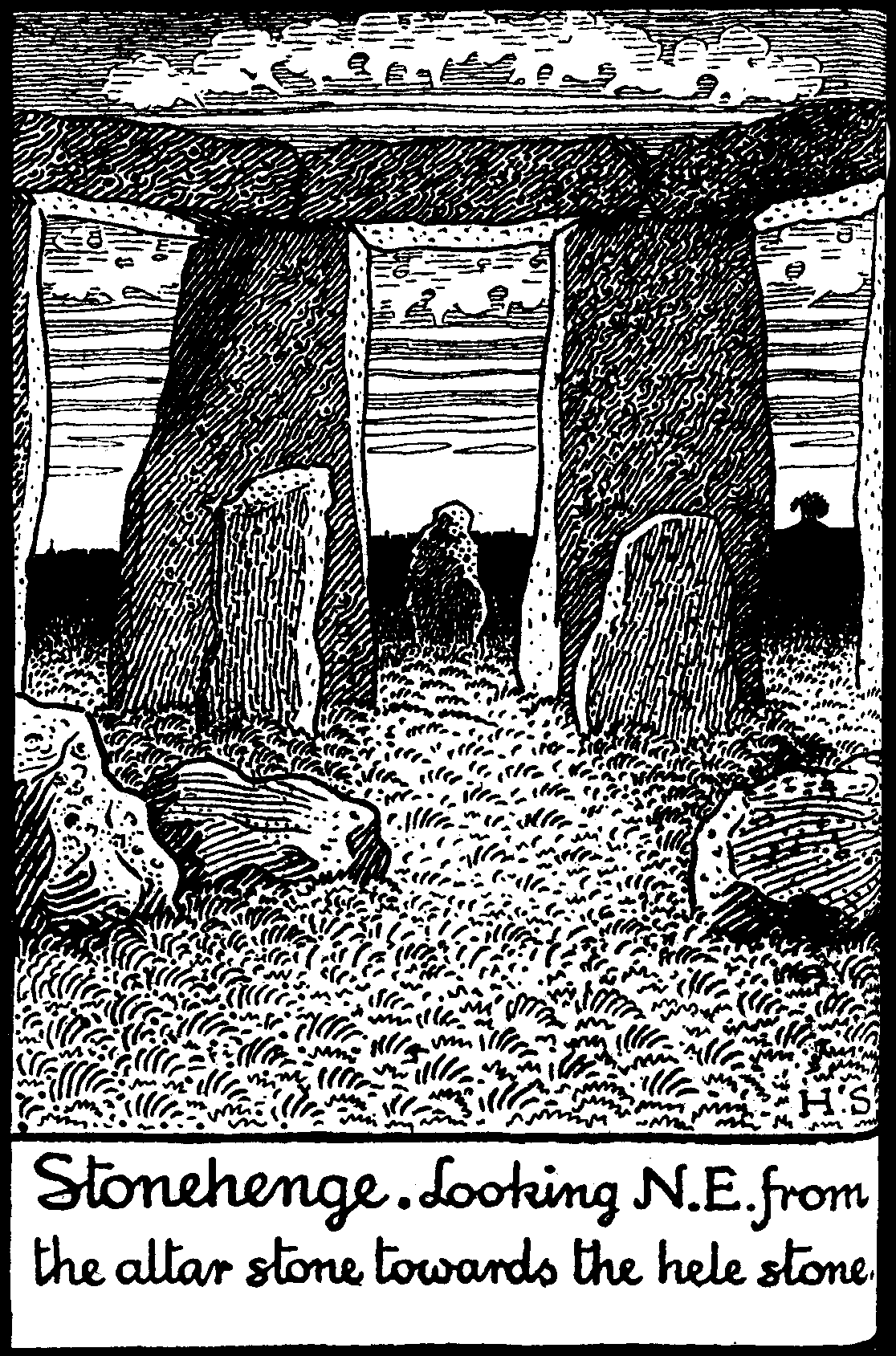
It was necessary to bed one stone deeper than the other, in order that their two summits should be level to receive the lintel or impost. One stone therefore was sunk to a depth of four feet, while the other extended downwards eight feet three inches. To compensate for the lack of depth in the shorter stone, its base was shaped into an irregular projecting boss to give it a greater bearing area. It was decided to raise the larger stone first, and the foundation was dug as follows : A slanting trench was cut with the deer's horn picks through the earth and chalk, having at its deeper end a perpendicular chalk face against which the Sarsen could rest when upright. Rubble and chalk were cleared away, and the stone carefully slid down the plane to its foundation.
To raise it, now that its base rested against a solid wall of chalk, was not a great matter. The same ropes of hide and tree trunks which had served for its transport would again have come into play. Slowly it would be levered up, and packings or wedges of wood or stone inserted. Thus inch by inch, probably, it rose higher and higher, strutted up, perhaps, by strong saplings as it reared its head above the busy crowd of builders. Blocks of Sarsen were packed beneath it to equalise the bearing, and then the excavation was filled in with chalk and rubble, which doubtless was well rammed down.
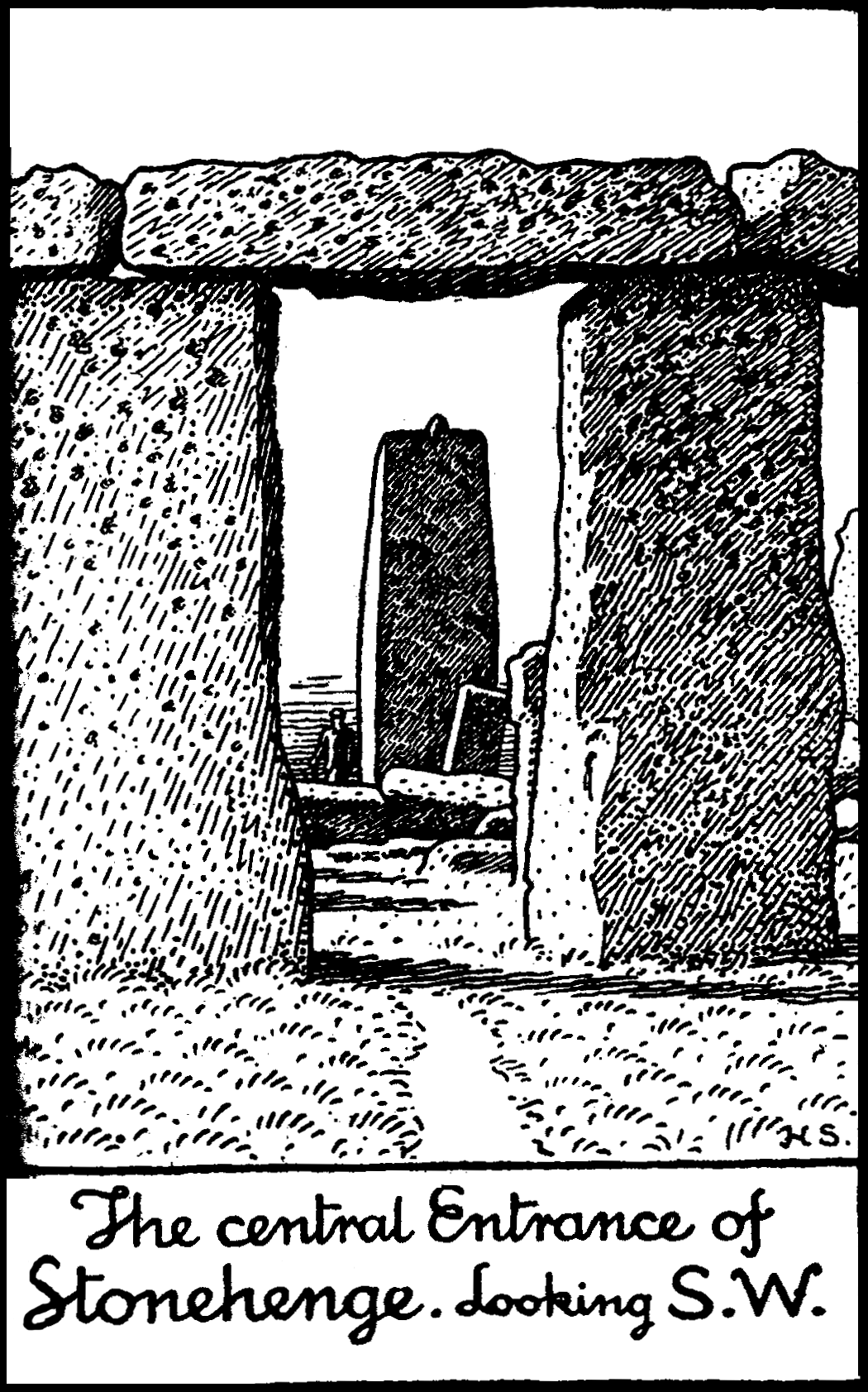
While all the Trilithons are composed of a "local " stone, known generally as " Sarsen"; all the " simple uprights " are of " foreign " stone, sometimes classed together roughly as " Syenite." This latter term must be understood in a very comprehensive sense since the simple uprights show considerable variation in quality, but one and all are foreign to the county of Wiltshire ; whereas the larger Sarsen blocks are to be found in considerable numbers scattered over the Wilt-hire Downs. This difference in material seems to present a considerable difficulty ; and the question naturally arises, How did the foreign stones come to Salisbury Plain ? This point will be considered later. But the Sarsens present no .problem, and so may be considered first of all, for familiar as they are their story is full of interest.
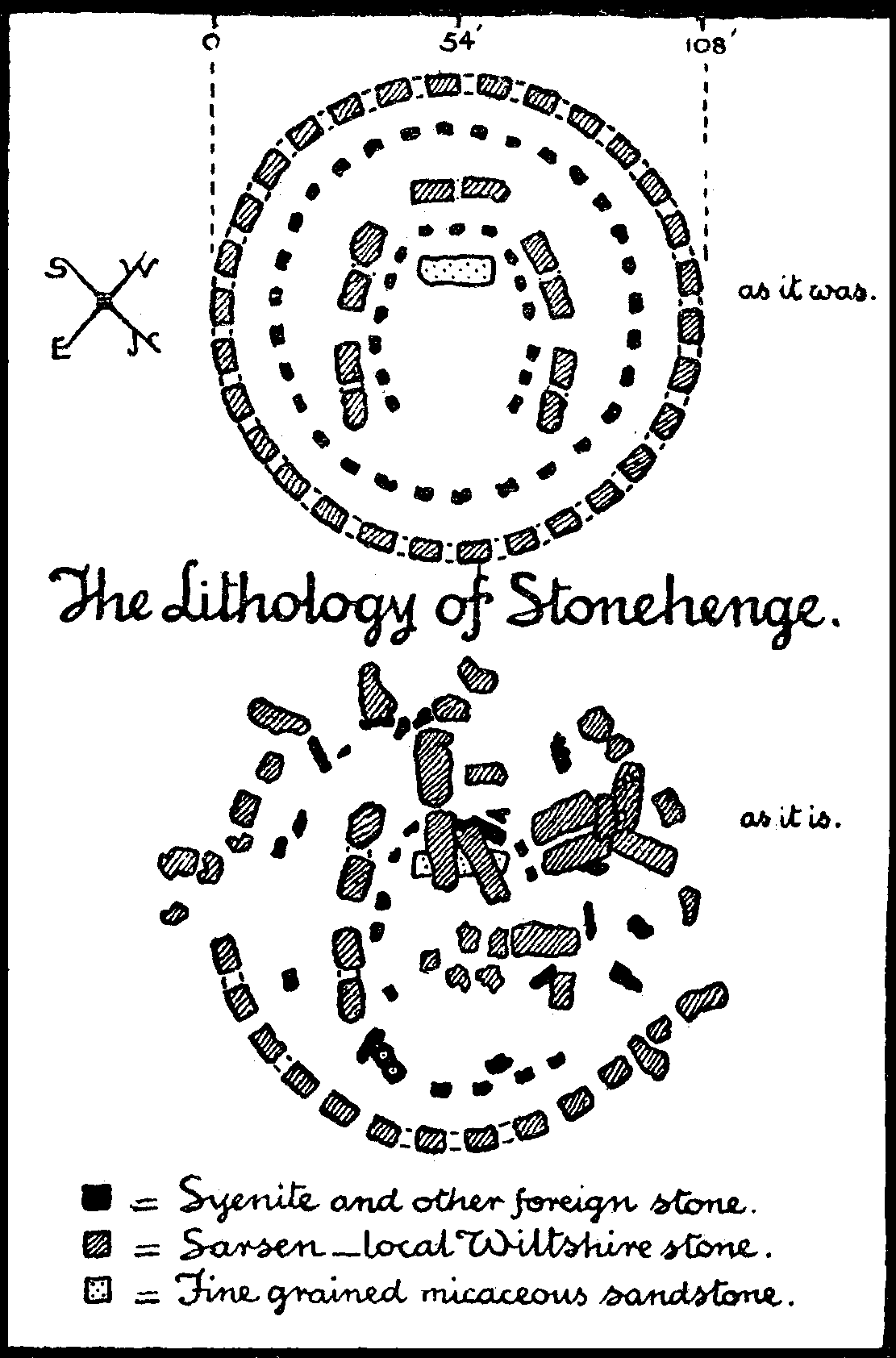
THE STORY OF THE SARSENS
The geologist would probably describe the Sarsens stones of Wiltshire as " masses of saccharoid sandstone," which in plain English might be rendered as boulders closely resembling gigantic
dumps of coarse sugar. These huge stones are to found, though in decreasing numbers, scatteredall over the plain, and particularly along the ridges the Marlborough Downs. The country folk,
ways picturesquely minded, call them Grey *ethers."
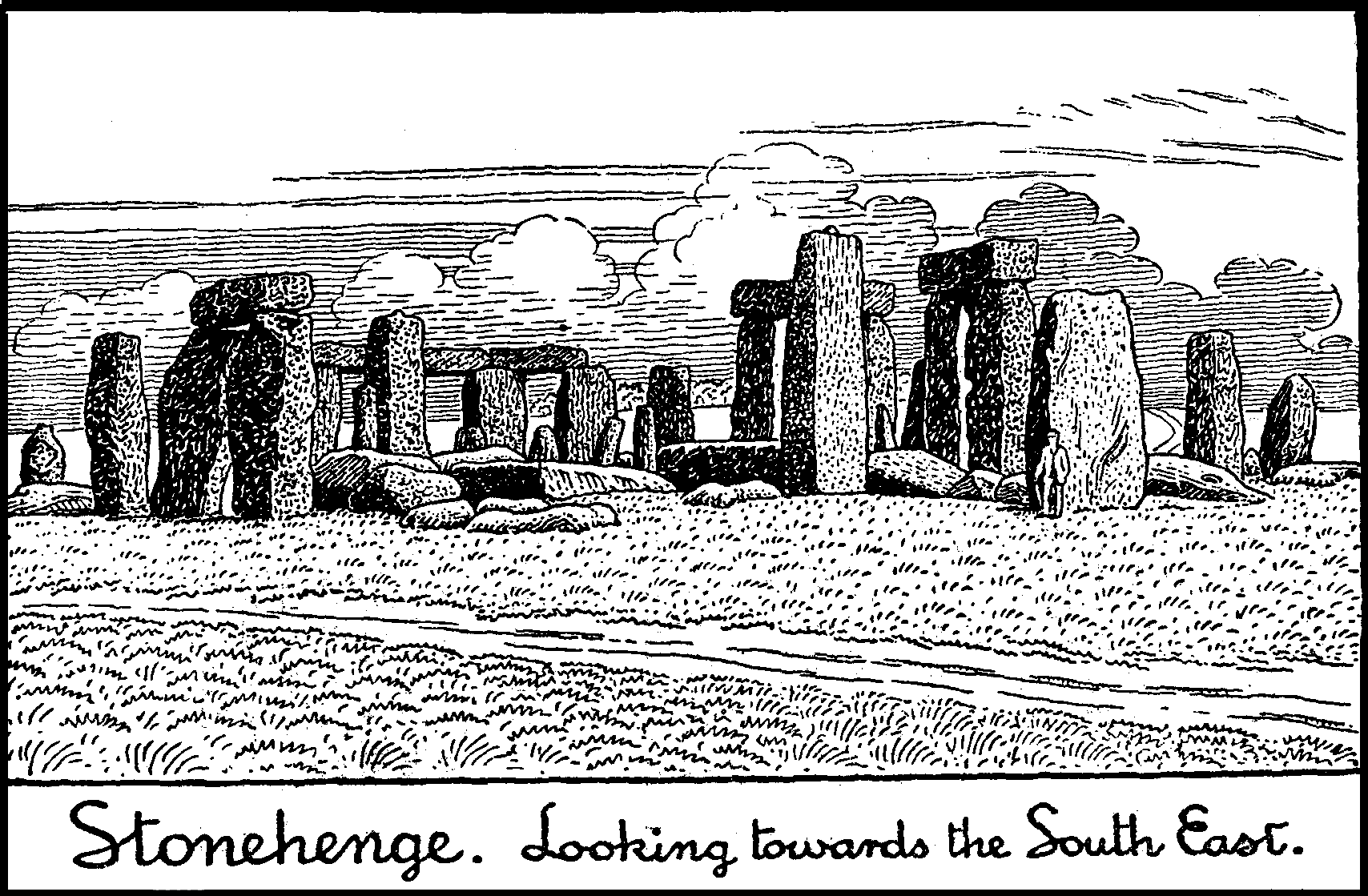
THE BUILDING OF STONEHENGE
THE question is often asked, " How did they build Stonehenge ? " There is a refreshing simplicity about that indefinite word " they "; but for the present, whoever " they " may be, it is possible to some extent, at all events, to furnish an answer to this ever recurring query. In the first place, however, it may be well to recapitulate very briefly the conclusions already arrived at, before entering into a more detailed description of the tools which were employed in the work of erection, and the methods by which the huge Sarsens were reared into position.
Stonehenge is a circular monument, enclosed by a circular earthwork, and approached by an avenue lying north-east and south-west. Without the circle lies four Sarsen stones. The Hele Stone, and two smaller stones unworked, occupying definite sites with reference to the rising and setting of the sun at the Summer and Winter Solstices and the so-called Slaughtering Stone. The monument proper, consisting of a circle of Sarsen Trilithons, enclosing a circle of upright foreign stones. Within these, five detached Sarsen Trilithons, of graduated height. These five Trilithons are set horseshoe wise. Before them a standing horseshoe of foreign stones, and in the .front of the great Trilithon a flat slab or altar stone. From this stone it is possible to look outwards towards the Hele. Stone, which lies in line with the axis of the monument drawn through the centre of the Altar Stone.
The Sarsen stones were obtained from the immediate neighbourhood, the foreign stones must have been imported from South Wales. All the stones, with the exception of the four specially indicated, have been worked. The question naturally arises how were they worked ? The answer to this may be given without the least hesitation : with stone tools. For many years the method of working the stones was a matter of great debate, and the uncertainty then prevailing permitted many theorists to speculate on the " Roman " origin of the structure. Now, however, the entire absence of any metal which resulted from Mr. Gowland's excavations in 1901 at once precludes the possibility of the builders being anything but a primitive people, to whom the use of metal was unknown.
It has been suggested that the rough stone was violently pounded with the heavy mauls until the surface was broken up and reduced to sand for a considerable depth, and the debris brushed away. The projecting ridge resulting from this could then be cut away by hammer and stone chisel, or even by the hammer alone.
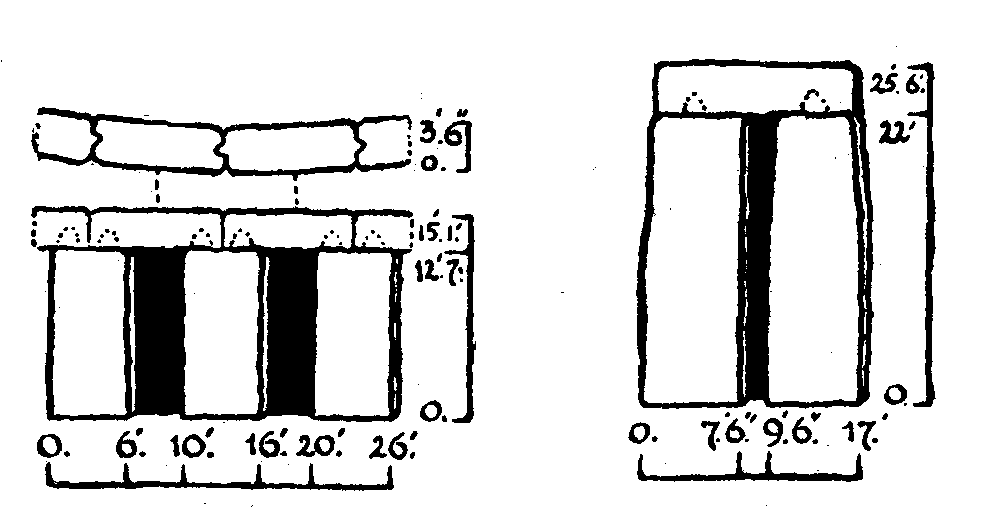
TENONS AND MORTICES
Hitherto no word has been said as to the arrangement of mortice and tenon, by which the Trilithons are keyed together. This has been done purposely, in order that the constructional questions relating to Stonehenge should, as far as possible, be dealt with together, and in due order. In the outer circle of Trilithons each upright had two tenons worked on its apex, to bear the two lintels or horizontal stones which rested upon it. Corresponding mortices were sunk in those stones to admit the tenons. In the case of the Trilithons of the Inner Horseshoe, only one tenon on each upright was necessary.
Further, the ends of the lintels of the outer circle were shaped so as to dovetail into one another, and form what is known as a " toggle " joint. This can easily be seen to-day in the group of three Trilithons which lie between the Altar Stone and the Hele Stone. This careful arrangement of mortice, tenon, and toggle has doubtless very much to do with the comparative stability of Stonehenge at the present day. Had these simple but effective measures not been taken, it would not be exceeding the bounds of possibility to say that to-day the ruin would have presented a mass of fallen stones, and the task of their reconstruction would be well-nigh impossible.
Evidently the early mason found the cutting of those tenons by no means an easy task, for, with two exceptions, the workmanship is not remark-able. Luckily for the observer to-day the tenon on the remaining upright of the Great Trilithon is very strongly marked, and stands out boldly on its apex, thus affording a clue to those existing on other stones. The mortice holes were easier to accomplish. A small depression may have been made first of all, and then a round stone inserted with sand and water.
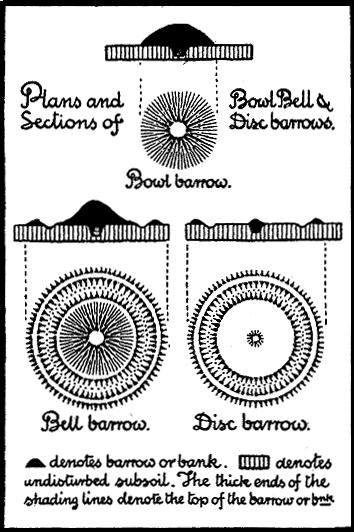
At one time it was considered that these Barrows were the monuments erected to the memory of warriors who had fallen in battle. Though this popular conception is still current, it seems hardly likely that a victorious army would tarry after the day was won to erect these laborious monuments, all of which are designed and laid out with no little skill. A far more reasonable hypo-thesis, and one more in accordance with fact, is that they represent the graves of exalted personages, and that their erection extended over a considerable period.
The Barrows may be roughly divided into two classes:
(i) the Long Barrow ;
(ii) the Round Barrow, with its three variants, the Bowl, the Bell, and Disc Barrow.
The Long Barrow is the older form, and may usually be referred to the Neolithic Age. Wilt-shire is specially rich in Long Barrows. There are no fewer than seventy-two within its limits, and fourteen others have been destroyed within the past century. They are usually found standing alone, and very seldom is it possible to find two of them within sight. They are also, as a rule, found upon rising ground. Their construction is somewhat curious. They vary from two to four hundred feet in length, thirty to fifty feet in breadth, and from three to twelve feet in height.
The Bell-shaped Barrow, which reaches its highest development on the plain round Stonehenge, and is more common and more beautiful in Wiltshire than in any other part of England.
Indeed, the Stonehenge Bell Barrows are the very crown of the Sepulchral Mound on Salisbury Plain. Unlike the Long Barrow, they are entirely surrounded by a circular ditch, from which material for the Mound has been excavated ; within the ditch is a circular area level with the turf, from which the mound rises from five to fifteen feet in a graceful conical form. The diameter will be upwards of one hundred feet, so that the entire structure is consider-ably larger and more impressive than the Bowl Barrow.
"The Disc Barrow," so named by Dr. Thurnam, the great Barrow expert, from its re-semblance to a flat dish surrounded by a deep rim. It consists of a circular area, level with surrounding turf, having a diameter of about one hundred feet. This circular area is enclosed by a ditch with a bank on the outside, both usually very regular and well constructed. Within, at the centre, is a mound not more than a foot high containing the sepulchral deposit. Occasionally there are more than one of these minute mounds, which often escape notice by reason of their insignificance.